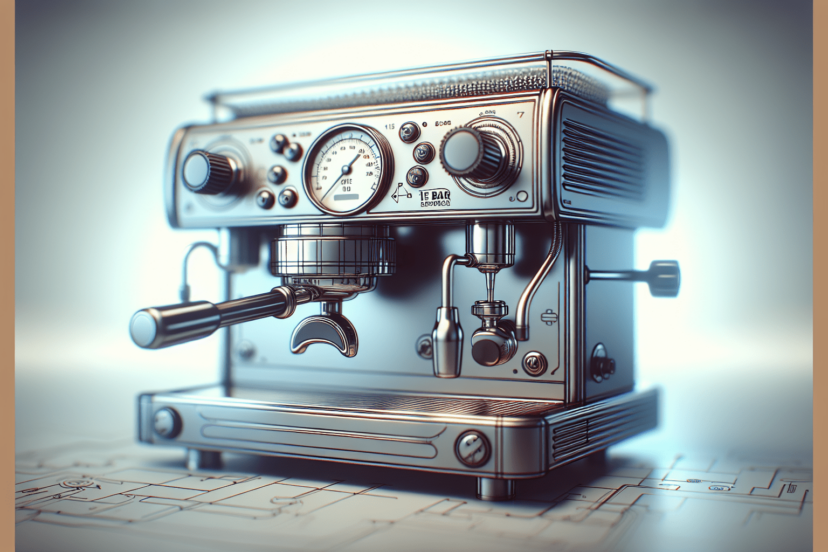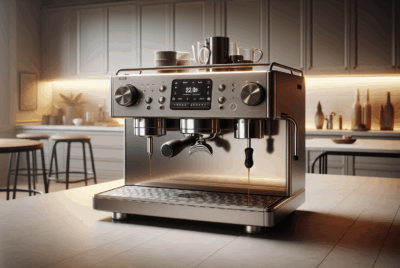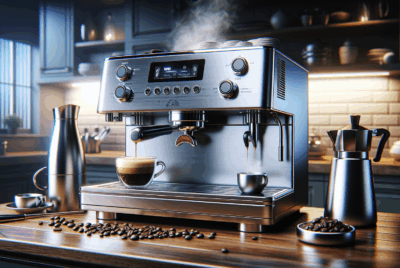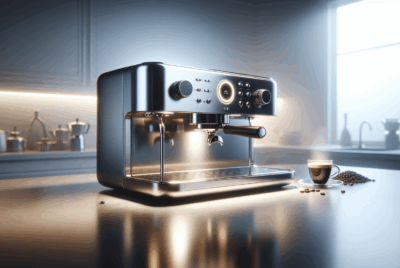Understanding the Functionality of a 15 Bar Espresso Machine
As an Amazon Associate, I earn from qualifying purchases, at no additional cost to you. Disclaimer
Have you ever wondered what makes an espresso machine tick, particularly one with 15 bars of pressure? If you’re an espresso enthusiast, or just someone curious about the coffee world, the concept of “bars of pressure” might have crossed your path. The term pops up frequently when discussing espresso machines, often touted as a critical feature for brewing that perfect shot of espresso.
Understanding how a 15 bar espresso machine functions can initially seem like diving into a complex world of coffee science. However, once broken down, it becomes clear and straightforward. Let’s journey through the intricacies of these machines, what the bars signify, and why they’re pivotal to crafting that ultimate espresso experience.
Explore the Best Espresso Machines
What is Pressure in Espresso Machines?
Pressure in the context of espresso machines is measured in bars. A bar is a unit of pressure approximately equal to atmospheric pressure at sea level. In coffee making, this pressure is crucial because it forces hot water through tightly packed coffee grounds, extracting flavors, oils, and aromatic compounds that define your espresso shot.
The Role of Pressure in Espresso Brewing
Pressure is not just a technical detail in espresso brewing but a real game-changer. When water is likely pushed through the coffee grounds, it extracts the rich flavors that you taste in your espresso. Too little pressure might result in a weak, under-extracted shot, while too much might make it bitter or over-extracted.
The right amount of pressure, ideally around 9 bars for many experts, creates that perfect espresso shot — well-balanced, rich in flavors, and topped with a creamy crema. That elusive flavor that coffee houses strive to achieve comes significantly from using the right pressure.
Understanding the 15 Bar Espresso Machine
So, why are some espresso machines designed to operate at 15 bars if 9 bars are considered optimal? The concept is simple yet fascinating, involving the machine’s operation logic and the fluid mechanics of espresso extraction.
Why 15 Bars?
When you notice a machine boasting 15 bars, it refers to the maximum pressure the machine is capable of producing. However, this is typically higher than what you would actually use for brewing. The additional pressure ensures that adequate force is delivered quickly and consistently, maintaining the stability and performance required for high-quality espresso.
This overpressure guarantees that the machine will maintain at least the crucial 9-bar level while compensating for any loss of pressure due to wear, clogging, or inconsistencies in coffee grind, dose, and tamp.
The Inner Workings
A 15 bar espresso machine includes a pump capable of creating this elevated pressure level. As it functions, various elements like the boiler, group head, and portafilter work in unison to channel hot water through the coffee puck efficiently.
The process includes warming the water, creating consistent pressure from the pump, and pushing this pressurized water through finely ground coffee. This integrated process extracts flavors uniformly and efficiently, delivering the desirable espresso shot.
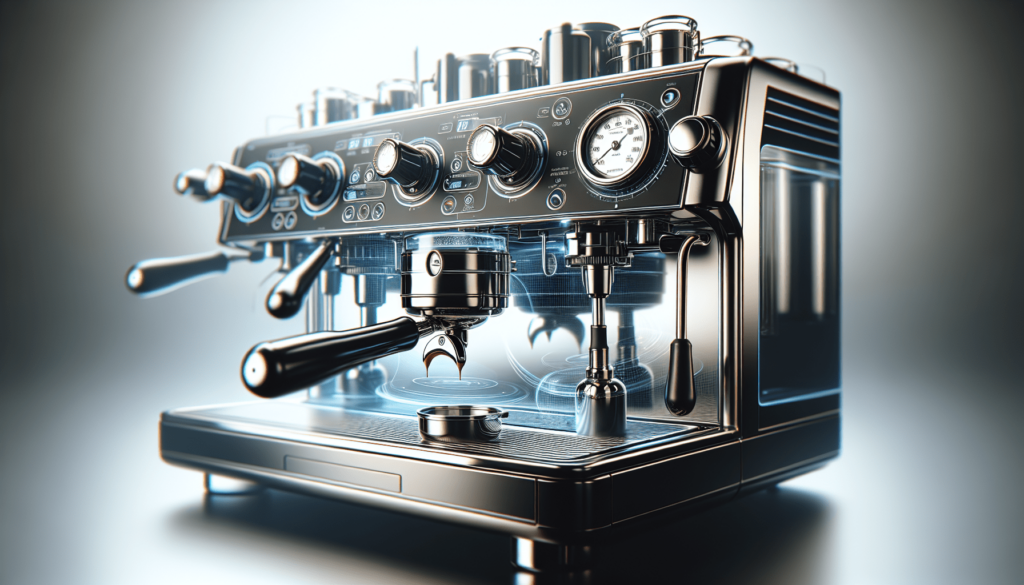
Components of a 15 Bar Espresso Machine
Breaking down the espresso machine reveals the fascinating roles of its various components. Each plays a part in ensuring uniform pressure, temperature stability, and ultimately, quality espresso extraction.
The Pump
Crucially, the pump is responsible for creating and maintaining the 15 bars of pressure. Machines typically use either rotary or vibratory pumps.
| Type of Pump | Description |
|---|---|
| Rotary Pump | Known for quiet operation and consistent pressure, suitable for commercial or high-end machines. |
| Vibratory Pump | More common in home espresso machines, it’s compact and affordable but can be louder during use. |
Each type of pump has its merits depending on your needs and budget. Rotary pumps offer smoother pressure delivery, while vibratory pumps are practical and accessible.
The Boiler
The boiler’s role is to heat water to optimal brewing temperatures, usually between 195°F and 205°F (90°C to 96°C). Precision in temperature is essential as it affects the rate of extraction and ultimately the flavor profile of your espresso.
The Portafilter and Group Head
The portafilter is the basket holding your coffee grounds. Its interaction with the group head ensures even water distribution, crucial for consistent extraction. This tandem plays a pivotal role in maintaining pressure and distributing water across the coffee evenly.
The Process of Making Espresso with a 15 Bar Machine
Once you grasp how the machine operates, you can appreciate the art of making espresso. The process involves precise steps, from coffee selection to brewing, impacting the final espresso’s quality.
Selecting the Right Grind
A consistent and appropriate grind size is essential. For espresso, a fine grind means the water interacts with more surface area, extracting flavors effectively under pressure.
Dosing and Tamping
Accurately measuring the coffee and properly tamping ensures even water distribution and pressure application. Tamping compresses the coffee grounds, creating resistance for water to pass through evenly.
Brewing
Once set, brewing involves controlling time and ensuring the machine operates optimally to produce the desired espresso shot. Monitoring the shot’s timing helps prevent over-extraction or under-extraction, directly affecting taste.
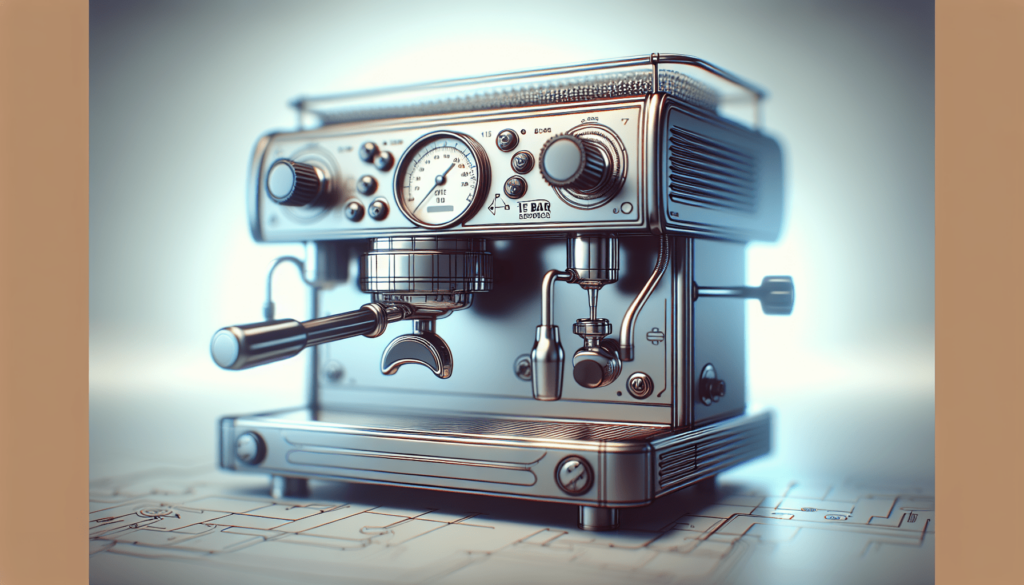
Why Does Pressure Matter So Much?
Pressure is more than just numbers; it plays a vital role in espresso’s essence. Here’s why it matters:
- Flavor Extraction: Adequate pressure extracts the right amount of oils, flavors, and aromatic compounds.
- Crema Formation: The lovely crema atop your espresso is a result of balanced pressure interacting with coffee oils and CO2.
- Texture and Body: Pressure affects the texture, body, and overall mouthfeel, providing the richness that espresso is known for.
Troubleshooting Pressure Issues
Espresso brewing is as much a science as it is an art, and often, troubleshooting is part of crafting that perfect shot. Here are some common pressure-related issues and their solutions:
Low Pressure
Low pressure can lead to a weak, under-extracted espresso. Possible causes include:
- Clogged Portafilter or Group Head: Regular cleaning is necessary to prevent clogs.
- Incorrect Grind Size: Too coarse a grind requires adjustments to a finer size.
- Pump Malfunction: Maintenance or professional repair might be necessary.
Excessive Pressure
High pressure can cause over-extracted, bitter espresso. Reasons might include:
- Oversized Dose: Reducing the coffee amount can help balance pressure.
- Too Fine Grind: Adjusting to a coarser grind can alleviate excessive pressure buildup.
Conclusion: Embracing the 15 Bar Espresso Machine
A 15 bar espresso machine might sound technical, but it’s a powerful ally in crafting exceptional espresso drinks. Understanding its mechanics empowers you to adjust and fine-tune your brewing process, ensuring delightful espresso experiences every time.
By acknowledging the roles and operations of pressure within the machine, you can make informed decisions, troubleshoot brewing issues adeptly, and enhance your overall coffee-making knowledge. Whether you’re an amateur barista or an experienced espresso lover, knowing how your machine contributes to that perfect shot is an exciting, rewarding journey into the world of espresso.

